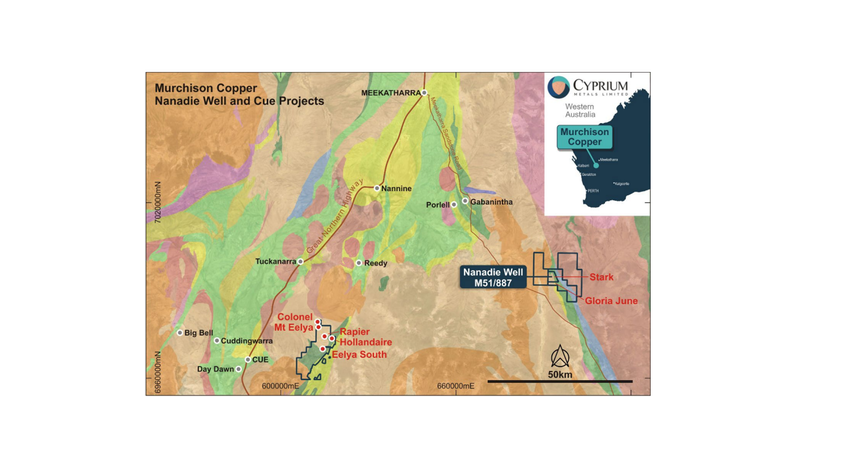Highlights:
- Cyprium Metals Ltd has reported results for the RC drilling campaign concluded at its Nanadie Well Project (NWP) in April/May 2022. The campaign mainly comprised two exploration programs across 6 (2 + 4) holes.
- The first exploration program was for the Stark prospect, which consists of magmatic copper-nickel‑PGEs mineralisation associated with layered mafic-ultramafic intrusive complex.
- The other exploration/investigation program was focused on testing the extensional mineralisation potential of the NWP project along strike north of the project’s Inferred Mineral Resource.
- Impressively, the extensional potential results have opened up an additional 1.6km of potential along strike north, comprising broad anomalous zones of copper–nickel-PGEs mineralisation.
Cyprium Metals Limited (ASX:CYM) has reported assay results from the April/May 2022 reverse circulation (RC) drilling campaign concluded at its Nanadie Well Project. The drilling campaign consisted of two exploration programs: one for the Stark prospect, and the other for testing the extensional potential of the project along strike north.
The Stark prospect: exploration in the past
The Stark ‘basal contact’ target comprises magmatic Cu-Ni-PGEs mineralisation pertaining to the Barrambie Igneous Complex (BIC), which is a layered mafic-ultramafic intrusive complex extending 75 kilometres along a major NNW-SSE striking crustal boundary – the Youanmi Shear Zone. The tenements of Cyprium partly cover 12 kilometres of the BIC, as well as 10 kilometres of the lightly explored prospective basal contacts.
Mineralisation observed in the past by operators and Cyprium comprises disseminated, stringer, matrix, semi-massive, and massive sulphides - primarily chalcopyrite with lesser pyrrhotite, pyrite, and pentlandite.
In addition, in 2014 outcropping Cu-Ni gossan and sulphide mineralisation was discovered in and around ‘shallow’ historic workings at the Stark prospect. The mineralisation, which is hosted by gabbro on or near its basal contact with banded iron formation (BIF), plunges gently south.
The prospect has seen limited historical exploration which includes geological mapping and surface sampling, geophysics, and drilling.
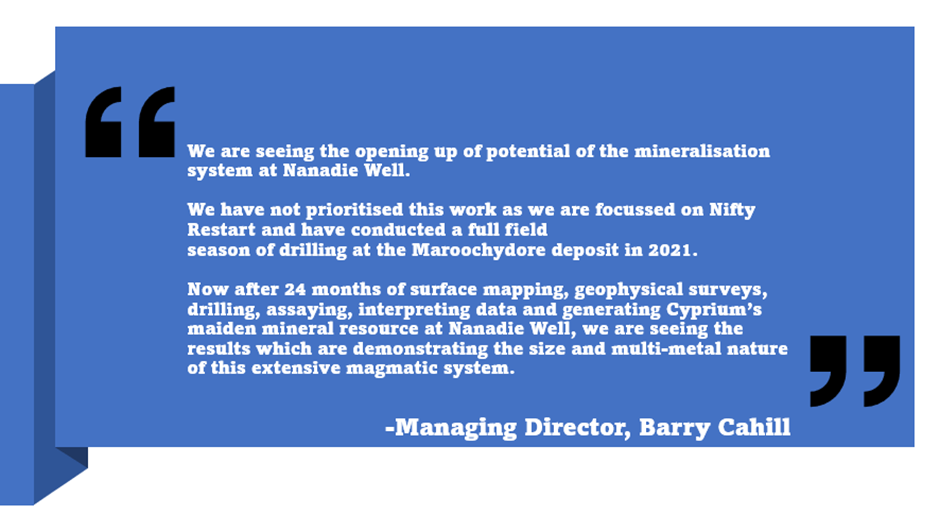
Image Source: © 2022, Kalkine Media®
Drilling campaign overview – total six holes
The RC drilling campaign, which covered a total of six holes, tested various exploration targets in the Nanadie Well Project for 918 metres. The campaign comprised two programs: the Stark basal contact program (across two holes), and extensional potential program (to test the potential of the current Nanadie Well mineralisation to the north strike: across four holes).
Stark basal contact program: Two holes were drilled at the Stark prospect, with one drillhole testing a SQUID EM anomaly and the other one testing the plunge of past drill intercepts. Both drillholes hit sulphide mineralisation in gabbro above the basal BIF contact:
a) In hole 22SKRC001 intersected a wide interval of disseminated, matrix, and semi‑massive chalcopyrite and pyrrhotite from 36m within an embayment in the basal gabbro contact. The following are the drill results:
b) In hole 22SKRC002 were intersected disseminated-to-splashy pyrrhotite and chalcopyrite towards the base of the gabbro, returning the following intercept: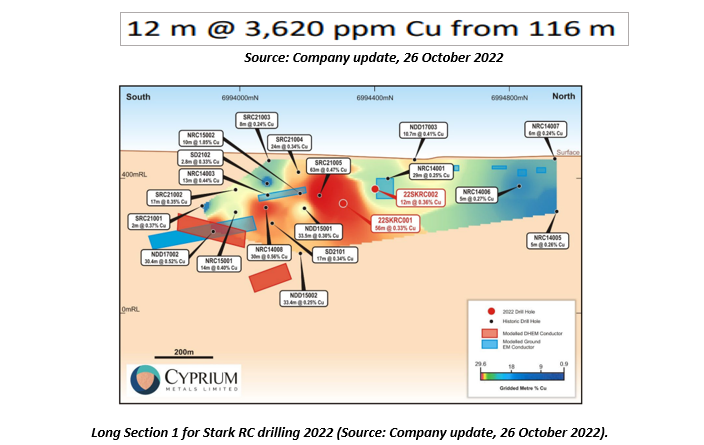
Extensional potential investigation program: A line of four holes was drilled to test 1.6km along strike north of the Inferred Mineral Resource (40.4 Mt @ 0.40 % Cu, 0.10 g/t Au, CYM ASX announcement dated 19 July 2022) nearby anomalous intercepts in historic drillholes.
Throughout the hole, finely disseminated chalcopyrite was sporadically logged. The highest volume ranged between 86 m and 98 m in hole 22NWRC003A as follows:
Impressive extensional potential
The RC drilling was designed to test the northern extents of the layered magmatic intrusive polymetallic mineralisation of Nanadie Well. The 16-m copper/gold mineralisation zone intersected in hole 22NWRC003A lies 1.6 km north of the current Nanadie Well mineral resource. The results thus seem to pave way to an additional potential strike of 1.6km along strike north for the current mineralisation. The company too is planning work programs to target the potential mineralised corridor.
Hence, follow-up geophysical and drilling programs are being designed by the company geologists to verify this potential.
Drill results compiled
The overall drill assay results are summarised as follows by holes: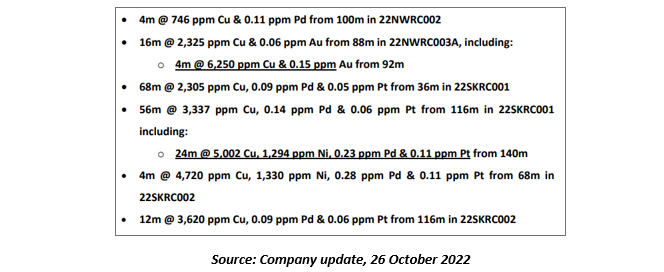
The following are the RC drilling Cu-Ni-PGEs intersections (reported May 2022) regarding the Nanadie Well Project: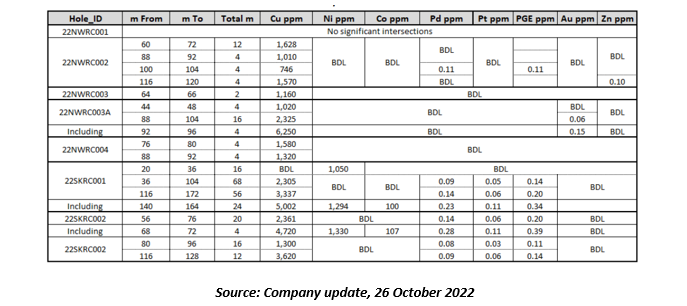 The way ahead
The way ahead
Analytical samples for Nanadie Well’s ‘extensional potential’ and ‘Stark basal contact’ programs were collected in the form of 4 m scoop split composites. Further, the company’s geologists will select and submit for assay 1 m splits from the mineralised composites to
- gain full understanding of the grade distributions, and
- help in the designing of follow-up geophysical and drilling programs for both exploration programs.

